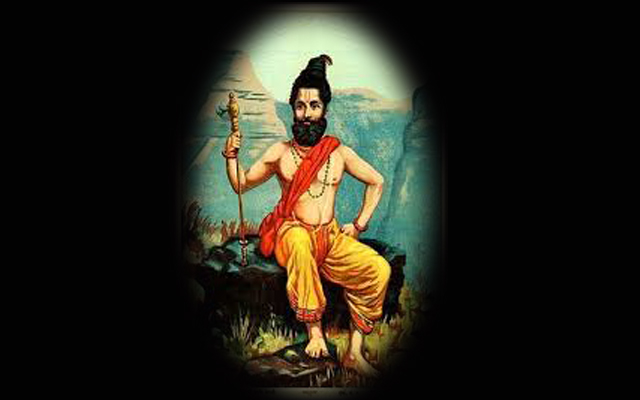 Parashuram was the son of Jamadagni and Renuka. His story is a part of the epic literature and Parashuram is often cited for his unfailing loyalty to his father. Jamadagni was a Brahmin while Renuka belonged to the Kshatriya, or the warrior clan. Parashuram was a great worshipper of Shiva. He was a master at weaponry and is believed to have been teacher to the epic greats, Guru Dronacharya, Karna and Arjuna.
Parashuram was the son of Jamadagni and Renuka. His story is a part of the epic literature and Parashuram is often cited for his unfailing loyalty to his father. Jamadagni was a Brahmin while Renuka belonged to the Kshatriya, or the warrior clan. Parashuram was a great worshipper of Shiva. He was a master at weaponry and is believed to have been teacher to the epic greats, Guru Dronacharya, Karna and Arjuna.
The story goes that a king by the name of Kartavirya once burnt down the monastery of a sage who was known to be among the best of his kind and also extremely short-tempered, Sage Vasishtha. The angry sage cursed him saying “Parashuram will kill you”. The king, undeterred by such proclamations, stole Vashistha’s holy cow Kamadhenu.
An angry Parashuram tracked the king down and killed him with his parshu (axe). To avenge their father’s death, the sons of the slain king killed the sage Vasishtha. This act angered Parashuram and he pledged to get rid of 21 generations of the Kshatriyas.
He kept his word and then to appease the gods after the act of genocide, he set himself down for a long season of penance. And as he sat in prayer, it is said that Parashuram saw 14 dead bodies floating past him in an unclaimed boat. He purified the dead bodies on the funeral pyre and brought them back to life. These fourteen men formed the basis of the fourteen gotra’s of a small community that calls the Konkan region its home. The community goes by the name of Chitpavan Brahmins. Their home was carved out of the sea and hence its hugs the coastlines in Mahrashtra, Goa and Karnataka. Legend has it that when the rest of the Brahmin community refused to recognize them, Parashuram flung his parshu into the ocean and reclaimed land for his people.
Parashuram taught them the Vedas and scriptures and also war craft and combat and these 14 gotras are designated to officiate at Parashuram’s pooja. The present day Chitpavan Brahmins refer to Parashuram as “Adi Purush” or the ancestor man. In Sanskrit, ‘chita’ means pyre and ‘pavan’ means pure. Since bodies were brought back to life on a pyre and were purified, hence they would be called as Chitapavan, meaning those who were purified by fire.
Collected by: Mayur Godbole
Location: Maharashtra
Image: ‘Parshuram’ by Raja Ravi Verma